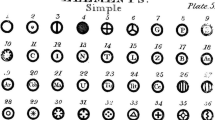Abstract
It is proposed to consider present-day physics as dealing with a special situation, the situation in which the phenomena of life and consciousness play no role. It is pointed out that physical theory has often dealt, in the past, with similarly special situations. Planetary theory neglects all but gravitational forces, macroscopic physics neglects fluctuations due to the atomic structure of matter, nuclear physics disregards weak and gravitational interactions. In some of these cases, physicists were well aware of dealing with special situations, or limiting cases as they are called in the article; in other cases, they were not. It is pointed out that, even if it were true that present-day physics accurately describes the motion of the physical constituents of living bodies, it would not give the whole story. Arguments are adduced, however, to show that the laws of physics, applicable for inanimate matter, will have to be modified when dealing with the more general situation in which life and consciousness play significant roles.
Similar content being viewed by others
References
R. Descartes,Œuvres (C. Adam and P. Tannery, Editors, Libraire Philosophique, Paris, 1967), Vol. XI, p. 119 ff.
Thomas H. Huxley,Method and Results (Vol. 1 ofSelected Works, Appleton and Co., New York, 1902).
P. B. Medawar,The Art of the Soluble (Methuen, London, 1967).
B. Petermann,Gestaltslehre (J. A. Barth, Leipzig, 1929); W. Köhler,The Task of Gestalt Psychology (Princeton University Press, 1969).
S. L. Jaki,The Relevance of Physics (University of Chicago Press, Chicago, 1966), Chapter VII.
N. Bohr,Atomic Theory and the Description of Nature (Cambridge University Press, 1934);Atomic Physics and Human Knowledge (Wiley, New York, 1958). W. Heisenberg in hisPhysics and Philosophy (Harper and Row, New York, 1962) expresses thoughts similar to those of the present article. See particularly Chapter VI.
H. Margenau,The Nature of Physical Reality (McGraw-Hill Book Co., New York, 1950);Scientific Indeterminism and Human Freedom (The Archabbey Press, Latrobe, Pennsylvania, 1968).
E. P. Wigner, “Are We Machines?,”Proc. Am. Phil. Soc. 113, 95 (1969); also “Remarks on the Mind-Body Question,” inThe Scientist Speculates, I. J. Good, ed. (William Heinemann, London, 1961), reprinted inSymmetries and Reflections (Indiana University Press, Bloomington, Indiana, 1967).
D. Bohm,Special Theory of Relativity (W. A. Benjamin, New York, 1965), p. 230.
E. Wigner, “The Problem of Measurement,”Am. J. Phys. 31, 6 (1963), reprinted inSymmetries and Reflections (Indiana University Press, Bloomington, Indiana, 1967); see in particular p. 166.
A. Einstein,Ann. Physik (Leipzig)17, 891 (1905).
Author information
Authors and Affiliations
Rights and permissions
About this article
Cite this article
Wigner, E.P. Physics and the explanation of life. Found Phys 1, 35–45 (1970). https://doi.org/10.1007/BF00708653
Received:
Issue Date:
DOI: https://doi.org/10.1007/BF00708653




